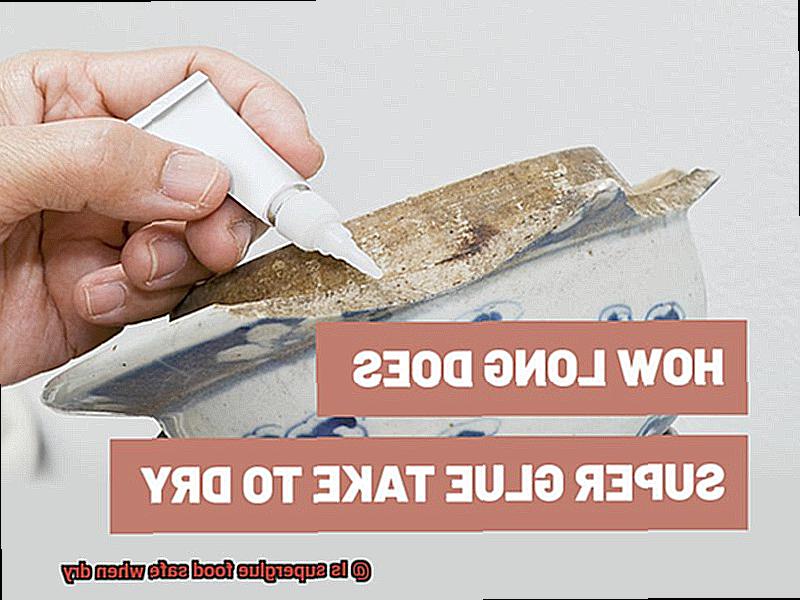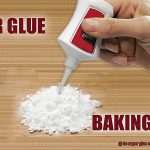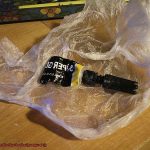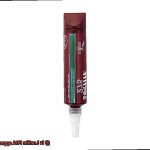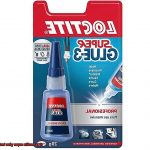Today, we’re tackling a question that might seem a bit out there, but trust me, it’s worth exploring. Ever found yourself in a sticky situation (pun intended) where you desperately needed to fix something in the kitchen to save your precious meal?
Well, that’s where superglue comes into play. But here’s the burning question: is superglue actually safe to use on food-related items once it dries?
Don’t fret, my hungry friends, because we’re about to dive deep into this topic and give you all the juicy details. In this blog post, we’ll uncover the mysteries behind superglue’s chemical composition, shed light on any potential risks involved, and ultimately answer the million-dollar question: is it food safe when dry?
So grab your lab coats and let’s embark on this culinary adventure together.
What is Superglue?
Contents
Superglue, also known as cyanoacrylate adhesive, is a powerful adhesive that has revolutionized the world of bonding. In this blog post, we will explore the dynamic world of superglue, diving into its composition, working mechanism, applications, and safety considerations.
Composition and Working Mechanism:
At its core, superglue contains cyanoacrylate, a chemical compound formed by combining cyano group compounds and formaldehyde. This potent combination results in a clear liquid that solidifies rapidly upon contact with moisture. When applied to a surface, superglue undergoes polymerization, linking molecules together to form strong chains of polymers.
Applications and Versatility:
Prepare to be amazed by superglue’s versatility. It can bond metals, plastics, ceramics, wood, rubber, and even certain fabrics. Broken objects? Check. Small parts? Check. Superglue is the go-to adhesive for immediate adhesion needs. It can withstand temperature extremes and common household substances, expanding its applications to heat-resistant projects and exposure to everyday chemicals.
Safety Considerations:
While fully cured superglue is generally safe, responsible usage is key. Not all superglues are created equal. Look for a product specifically labeled for food contact when using it near consumables. Allow the adhesive to dry thoroughly before exposing it to food. For repairs involving food-related items like ceramic bowls or utensils, choose food-grade adhesives designed for direct contact with food.
The Advantages of Superglue
In a world brimming with possibilities, superglue emerges as a remarkable adhesive superhero. With its astonishing bonding strength, versatility, and resilience to moisture and temperature changes, superglue has become an indispensable tool in households and industries alike. In this article, we will explore the myriad advantages of using superglue and how it can revolutionize your repair and DIY projects.
Unbreakable Bonds:
Superglue possesses an exceptional adhesive nature that allows it to bond various materials effortlessly. From plastics to metals, ceramics to wood, this adhesive creates a near-instantaneous bond that is exceptionally strong. Bid farewell to shattered objects and embrace a world where everything can be mended with just a dab of superglue.
Lightning-Fast Repairs:
Life is riddled with unexpected mishaps and broken items, but fear not—superglue comes to the rescue. Its ability to solidify rapidly upon contact with surfaces makes it ideal for swift repairs. Whether you’re reattaching a loose button or fixing a broken handle, superglue swoops in and saves the day in no time.
Versatile Applications:
Superglue’s prowess extends far beyond household repairs. Its versatility knows no bounds. Need to mend your beloved piece of jewelry? Superglue has got you covered. Involved in medical procedures? Superglue can even be used for wound closure under medical supervision. Its adaptability makes it an invaluable asset in countless scenarios.
Weatherproof Wonder:
Moisture and temperature changes often spell trouble for adhesives, but not for superglue. This adhesive superhero remains resilient in the face of humidity or extreme temperatures. Rest assured that your repairs will endure the test of time, unfazed by environmental conditions.
Extended Shelf Life:
Unlike other adhesives that may lose their effectiveness over time, superglue boasts an impressively long shelf life. You can store it for months without fretting about it drying out or losing its adhesive properties. It’s the adhesive that keeps on giving, ready to spring into action whenever you need it.
Easy Application:
Superglue’s compact and user-friendly packaging allows for precise application. Its clear drying feature ensures a seamless, professional finish, leaving no visible residue behind. Tackle your projects with confidence, knowing that the end result will be flawlessly repaired.
Affordable and Accessible:
Superglue is a budget-friendly adhesive option that is readily available in most stores. You don’t have to break the bank to obtain a high-quality bonding solution. The accessibility of superglue ensures that anyone can harness its extraordinary powers.
Potential Risks of Using Superglue Around Food
Superglue, the adhesive superhero that has saved countless household items from meeting their demise, may seem like a quick fix for all kinds of repairs. However, when it comes to using superglue around food, there are some potential risks that you need to be aware of. In this blog post, we’ll dive into the dangers associated with using superglue in food-related situations, so you can make informed decisions and keep your kitchen safe.
Toxic Chemicals:
Superglue contains chemicals like formaldehyde and acetone, which can be harmful if ingested. When superglue comes into contact with food or high temperatures, these toxic substances can be released, posing a risk to your health. Imagine biting into a sandwich only to ingest harmful chemicals that were lurking in the glue.
Poor Adhesion:
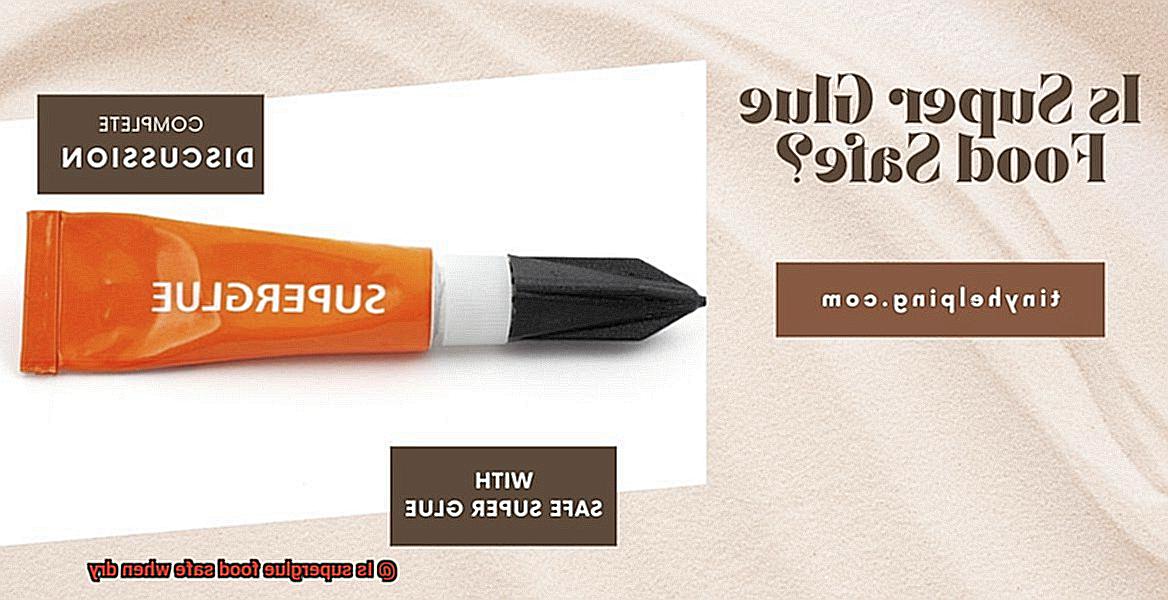
While superglue is known for its strong bond, it may not adhere well to certain surfaces when exposed to moisture or oils from food. This can result in the glue coming loose and potentially contaminating your food. Imagine taking a bite of your sandwich only to find a surprise piece of superglue. It’s not only unappetizing but also potentially dangerous.
Airborne Particles and Fumes:
During the drying process, small glue particles or fumes can be released into the air. These particles can settle on nearby surfaces, including your food items, and may pose a health risk if consumed. Breathing in these fumes can also be irritating to your respiratory system.
Digestive System Irritation:
Ingesting superglue can cause irritation and damage to your digestive system. Moreover, if large pieces of glue are accidentally swallowed, they can become choking hazards. The last thing you want is to compromise your health by consuming a substance that is not meant to be ingested.
Non-Food Safe Additives:
Some superglues may contain additives or fillers that are not food-safe. These substances can leach into your food and contaminate it, potentially leading to adverse health effects. It’s essential to be cautious about the products you use in your kitchen to ensure the safety of your meals.
Is Superglue Food Safe When Dry?
Well, before you grab that trusty tube of superglue, let’s talk about the potential risks involved when using it around food.
Not all superglues are created equal when it comes to food safety. Some contain toxic chemicals that can be harmful if ingested or come into contact with food. And let’s be honest, nobody wants a side of toxic glue with their meal.
So what can you do to ensure your food remains safe and glue-free? Let’s break it down:
Look for superglues specifically labeled as food-safe or non-toxic. These types of superglues have been formulated with ingredients that are considered safe for incidental contact with food.
Read the product labels and instructions carefully. Some superglues may be safe for indirect contact with food, like sealing a decorative item on a cake topper, but not for direct contact with consumable items. Know the limitations of the glue you’re using.
Use superglue sparingly and avoid applying it directly onto areas that will come into direct contact with food. Apply the glue on non-food contact surfaces and allow it to fully cure before using the item near or with food.
Accidents happen, we get it. But if you accidentally ingest superglue, don’t take any chances with your health. Seek medical attention immediately. Ingesting superglue can cause irritation, a burning sensation, and potential blockage in the digestive tract.
Choosing the Right Superglue for Food Contact
Repairing items in the kitchen or handling food-related projects requires the use of the right superglue. However, not all superglues are safe to use around food. To ensure the safety of your meals and avoid any potential health risks, it is crucial to select a superglue specifically designed for food contact. In this article, we will explore the key considerations for choosing the right superglue for food contact.
Look for Food-Safe or FDA Approved Labels:
To start, always look for products that are explicitly labeled as food-safe or FDA approved. These labels ensure that the superglue has undergone rigorous testing to ensure it does not contain harmful substances that can leach into your food. Don’t compromise on this essential aspect of product safety.
Resistance to Moisture and Temperature:
Food items often come into contact with moisture and undergo temperature changes during cooking, freezing, or microwaving. Therefore, it is vital to choose a superglue that can withstand these conditions without deteriorating or releasing toxic substances. Imagine repairing your favorite ceramic bowl only to have the glue dissolve when it encounters steam from hot soup.
Types of Food-Safe Superglues:
Epoxy-based adhesives are known for their strong bonding capabilities and resistance to moisture, making them common choices for food processing equipment and appliances. These adhesives provide reliable results while ensuring no harmful chemicals transfer to your meals.
Specific Applications:
Consider the intended application of the superglue. For repairing kitchenware and utensils, look for non-toxic, odorless, and water-resistant adhesives specially designed for these purposes. It’s crucial to remember that direct contact between the adhesive and the edible parts of the food should be avoided at all costs.
Read Product Labels Carefully:
Take the time to read product labels carefully before purchasing any superglue for food contact. Look out for any warnings or restrictions mentioned by the manufacturer. Paying attention to these details can save you from potential health hazards and ensure the longevity of your repaired items.
Tips for Using Superglue Around Food
Superglue, also known as cyanoacrylate adhesive, is a versatile tool for repairing broken items and bonding materials together. However, when using superglue around food, it is essential to prioritize safety. This article provides valuable tips on how to safely use superglue around food, ensuring worry-free meals.
Choose a Food-Safe Superglue:
When purchasing superglue for use around food, look for a product specifically labeled as “food-grade” or “food-safe.” These adhesives are made with FDA-approved ingredients and are designed to be safe for direct contact with food or drink.
Read and Follow Instructions:
Always carefully read and follow the manufacturer’s instructions when using superglue around food. Different brands may have specific guidelines on usage, drying time, and safety precautions. By adhering to these instructions, you can ensure that the glue is used correctly and poses no risk to your health.
Use the Smallest Amount Necessary:
To minimize any potential exposure to the adhesive, apply the superglue in the smallest amount necessary. Using a thin layer of glue reduces the chances of any chemicals leaching into the food.
Allow Ample Drying Time:
Ensure that you allow the superglue ample time to dry and cure completely before exposing it to food or drink. The drying time may vary depending on the brand and type of superglue used, so refer to the packaging for specific instructions. Rushing the drying process may result in incomplete curing, which increases the risk of chemicals contaminating the food.
Create a Barrier Between Glue and Food:
Consider creating a barrier between the superglue and the food by applying it on surfaces that do not come into direct contact with consumables. For example, if you need to repair a cracked ceramic plate, apply the superglue on the underside of the plate rather than directly on the surface that comes in contact with food. This extra layer of protection helps ensure that no glue comes into direct contact with the food.
Alternatives to Superglue for Food-Related Items
When it comes to repairing or assembling food-related items, choosing the right adhesive is crucial. Superglue may seem convenient, but concerns about its potential toxicity and chemical leaching into food have led to the search for safer alternatives. In this article, we will explore some fantastic alternatives to superglue that are food-safe, ensuring worry-free meals without compromising the integrity of your creations.
Food-Safe Epoxy:
Epoxy is a popular choice for bonding food-related items due to its strong bond and resistance to moisture and heat. Look for epoxy specifically labeled as food-safe or FDA-approved to ensure it meets the necessary safety standards for contact with food.
Silicone Adhesive:
Silicone adhesives are known for their flexibility, durability, and high-temperature resistance. They come in various forms such as sealants, caulks, and adhesives, making them versatile for different applications in the kitchen.
Food-Grade Adhesive Tapes:
For temporary or removable solutions, consider using food-grade adhesive tapes. These tapes are specially designed for use in the food industry and comply with food safety regulations. They provide a reliable bond without the need for curing time or potentially harmful chemicals.
Natural Adhesives:
If you prefer a more natural approach, certain natural adhesives can be used for food-related items. Gelatin-based glue, made from animal collagen, is commonly used in culinary arts and crafts. However, keep in mind that natural adhesives may not have the same strength or durability as synthetic options.
Mechanical Fasteners:
In some cases, it may be best to avoid adhesives altogether and rely on mechanical fasteners instead. Using screws, nuts, bolts, or clips can securely hold food-related items together without any adhesives that may come into contact with food.
h1tbjyd2qjA” >
Also Read: Is Glue Edible? – Glue Things
Conclusion
In conclusion, the question of whether superglue is food safe when dry demands careful consideration. While fully cured superglue is generally deemed safe, it’s vital to select the appropriate type of superglue and adhere to proper usage guidelines to guarantee the safety of your food.
Superglue contains chemicals like formaldehyde and acetone, which can be perilous if ingested. When exposed to food or high temperatures, these substances can be unleashed, posing a risk to your well-being. Moreover, concerns about poor adhesion and the potential for glue particles or fumes to taint food also arise.
To mitigate these risks, seek out superglues specifically labeled as food-safe or non-toxic. These products have been meticulously formulated with ingredients that are considered harmless for incidental contact with food. Scrutinize product labels diligently and abide by instructions regarding drying time and application.
It is imperative to use superglue sparingly and shun direct contact with food. Apply the glue solely on non-food contact surfaces and allow it ample time to fully cure before using the item near or in conjunction with food.
Alternatively, there exist safer alternatives worth considering when repairing or assembling items related to food. Food-safe epoxy, silicone adhesive, food-grade adhesive tapes, natural adhesives like gelatin-based glue, and mechanical fasteners all serve as viable options that can provide a secure bond without the potential risks associated with superglue.
Ultimately, prioritizing safety when employing any adhesive around food is paramount.

